Hyundai Ioniq 5 Vs. Tesla Model Y: Functional Vs. Funky
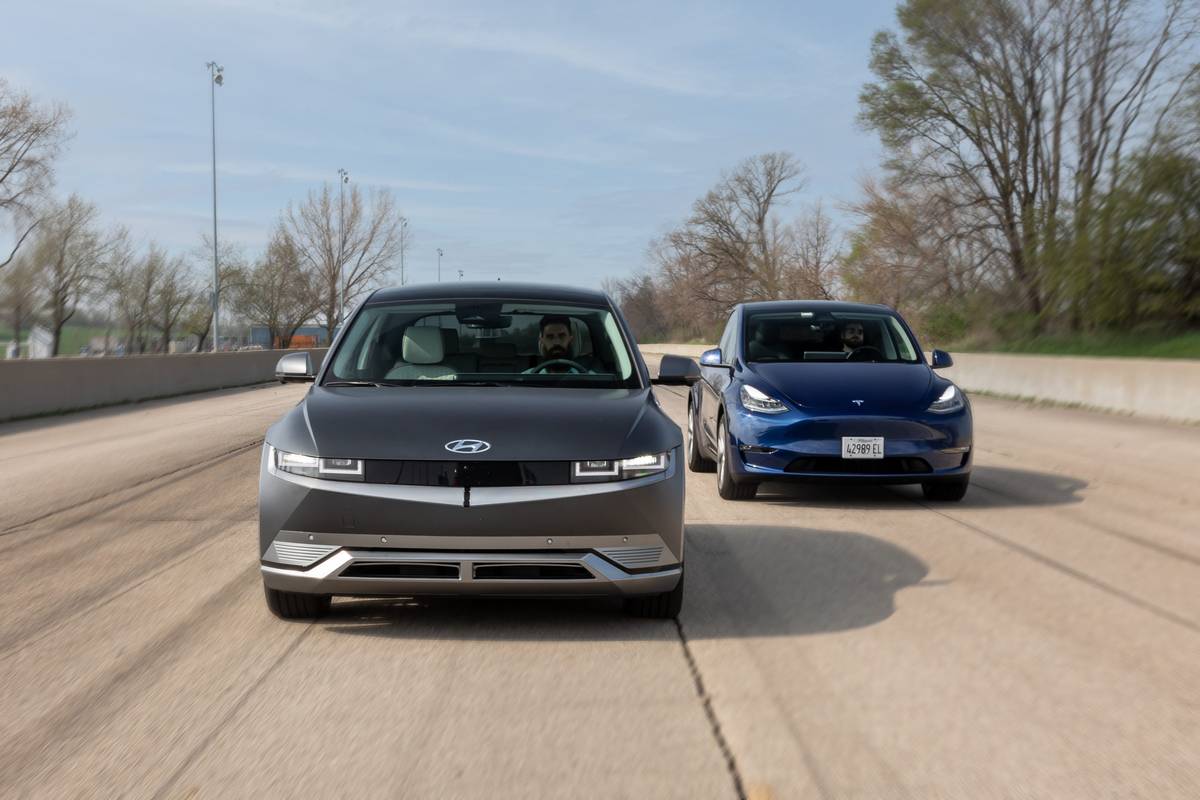
The SUV class is hot these days, with automakers adding new models to their lineups and shoppers willingly snapping them up. The growth in the world of gas-powered SUVs has now made its way to the electric SUV segment — largely because of established automakers seeking a foothold in the electric-vehicle market.
Related: Tesla Model Y Vs. Kia EV6: Best Against Next
One of those established brands is Hyundai, which launched the all-new Ioniq 5 SUV as a 2022 model. Featuring seating for five, available all-wheel drive, and distinctive exterior and interior styling, the Ioniq 5 is built on a new 800-volt EV platform to support quicker DC fast charging.
The Ioniq 5, and others like it, must contend with the popular Tesla Model Y. Fitted with standard AWD and seating for up to seven with an optional third row, the Model Y’s software updatability and integration with Tesla’s network of Supercharger fast-charging stations are compelling attributes that helped it win Cars.com’s Best Electric Vehicle of 2022 award.
Cars.com’s long-term test fleet includes a Model Y, so to see how this award-winning EV compares with the all-new Ioniq 5, we spent a week testing both. Besides our normal back-to-back driving loops and interior evaluations, we tested their charging performance at home and on the road, measured acceleration, and set up an autocross course to evaluate handling.
Most of the judged categories were worth up to 20 points, but the EV-specific tests — range accuracy, observed efficiency, and home- and fast-charging speeds — were worth from 40 to 60 points to reflect their importance to the EV ownership experience; in all, those four categories made up a third of overall scoring. The below chart shows how the Ioniq 5 and Model Y scored in each category, with wins and losses color-coded.
| 2022 Hyundai Ioniq 5 | 2021 Tesla Model Y | ||
|---|---|---|---|
| Cars.com Judges’ Subjective Scores | |||
| Front seats | (out of 20) | 15 | 12 |
| Rear seats | (out of 20) | 14 | 14 |
| Vehicle UI (screens, controls) | (out of 20) | 15 | 10 |
| Multimedia (apps, sources) | (out of 20) | 14 | 14 |
| Interior quality | (out of 20) | 14 | 12 |
| In-cabin storage | (out of 20) | 18 | 12 |
| Visibility | (out of 20) | 17 | 9 |
| Driving Tests | |||
| Powertrain | (out of 20) | 11 | 16 |
| Braking | (out of 20) | 14 | 17 |
| Ride quality | (out of 20) | 16 | 8 |
| Handling | (out of 20) | 9 | 18 |
| Noise | (out of 20) | 14 | 10 |
| As-tested value | (out of 20) | 17 | 10 |
| Cars.com Judges’ Scores Total | (out of 260) | 188 | 162 |
| Objective Scores | |||
| Safety features | (out of 20) | 18 | 18 |
| Driver-assist tech | (out of 20) | 12 | 12 |
| Cargo storage | (out of 20) | 15 | 18 |
| Child-safety seats | (out of 20) | 16 | 12 |
| EV-Specific Tests | |||
| Fast charging | (out of 40) | 40 | 28 |
| Home charging | (out of 60) | 50 | 60 |
| Observed efficiency | (out of 50) | 46 | 50 |
| Range accuracy | (out of 50) | 48 | 48 |
| Acceleration | |||
| 0-60 mph | (out of 20) | 20 | 20 |
| Quarter-mile | (out of 20) | 19 | 20 |
| Objective Scores Total | (out of 320) | 284 | 286 |
| FINAL SCORE | (out of 580) | 472 | 448 |
2: 2021 Tesla Model Y Long Range AWD
The verdict: Once the gold standard among electric SUVs, the Model Y now faces really good competition in the Ioniq 5, and even though the Tesla delivers a sportier driving experience, the Hyundai makes the Model Y’s user-interface quirks all the more glaring.

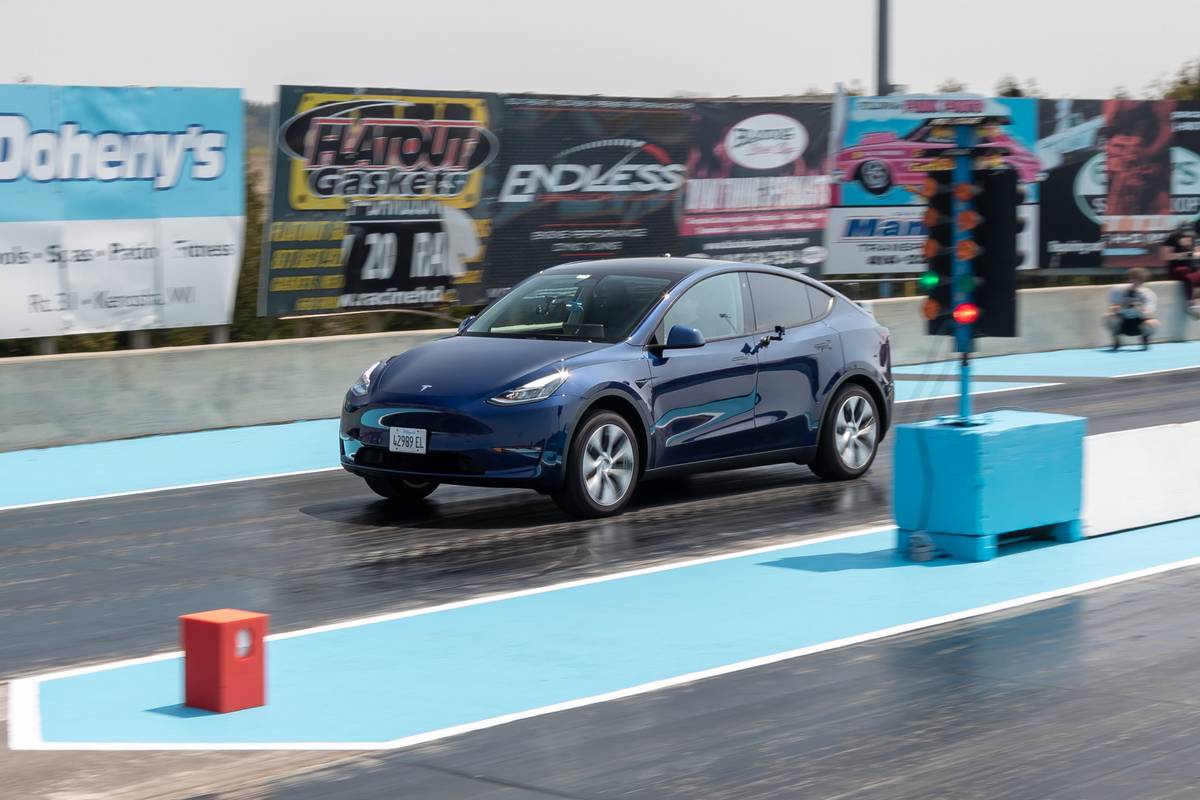
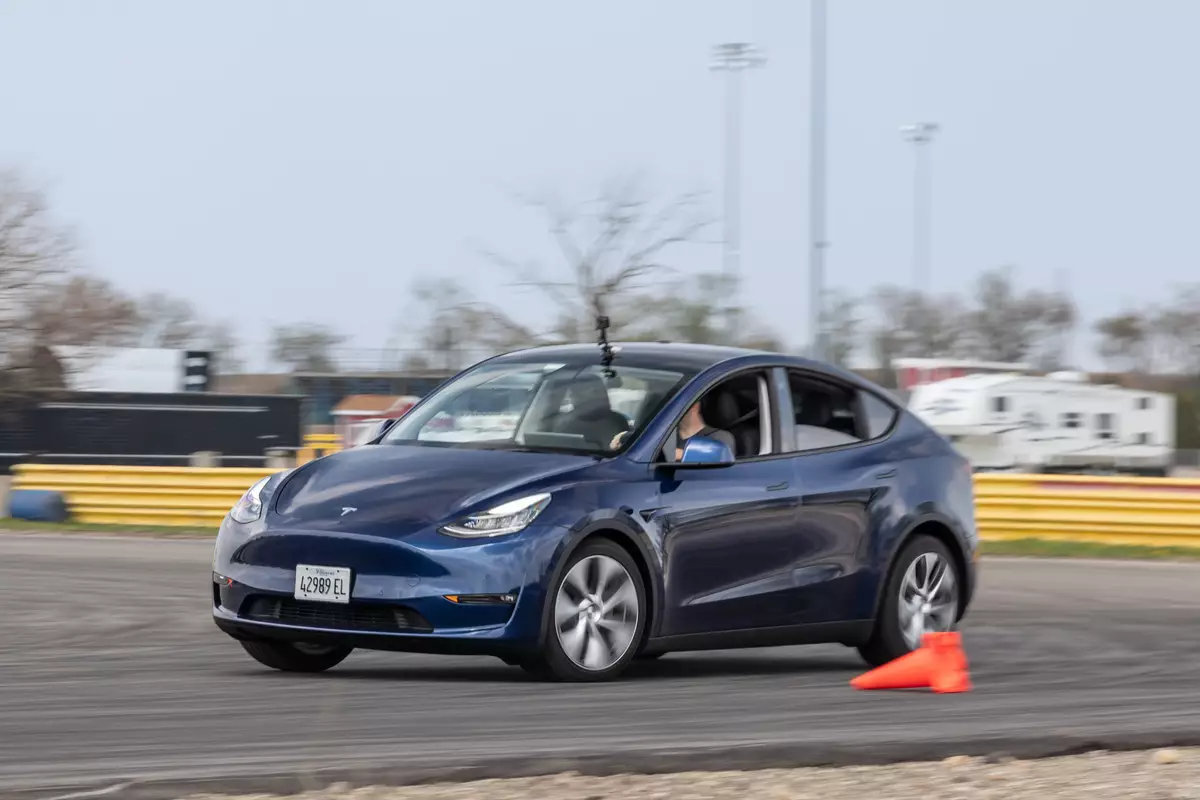
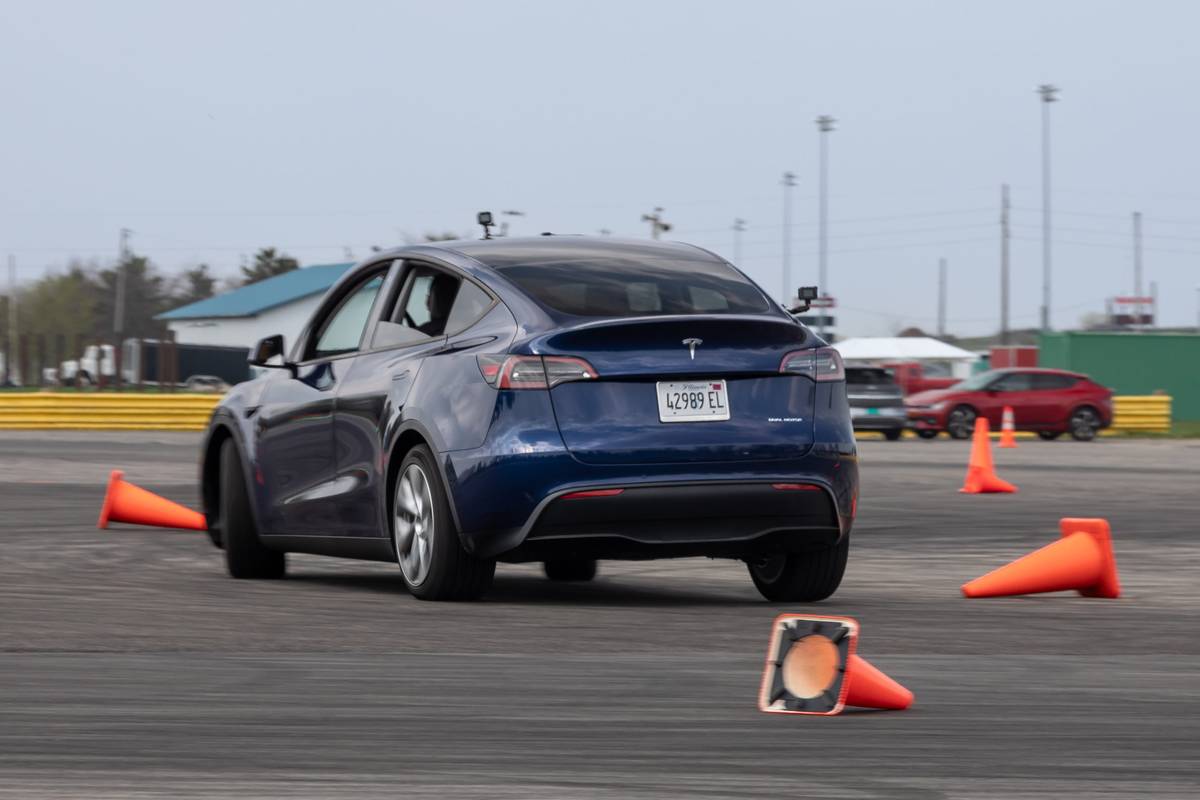
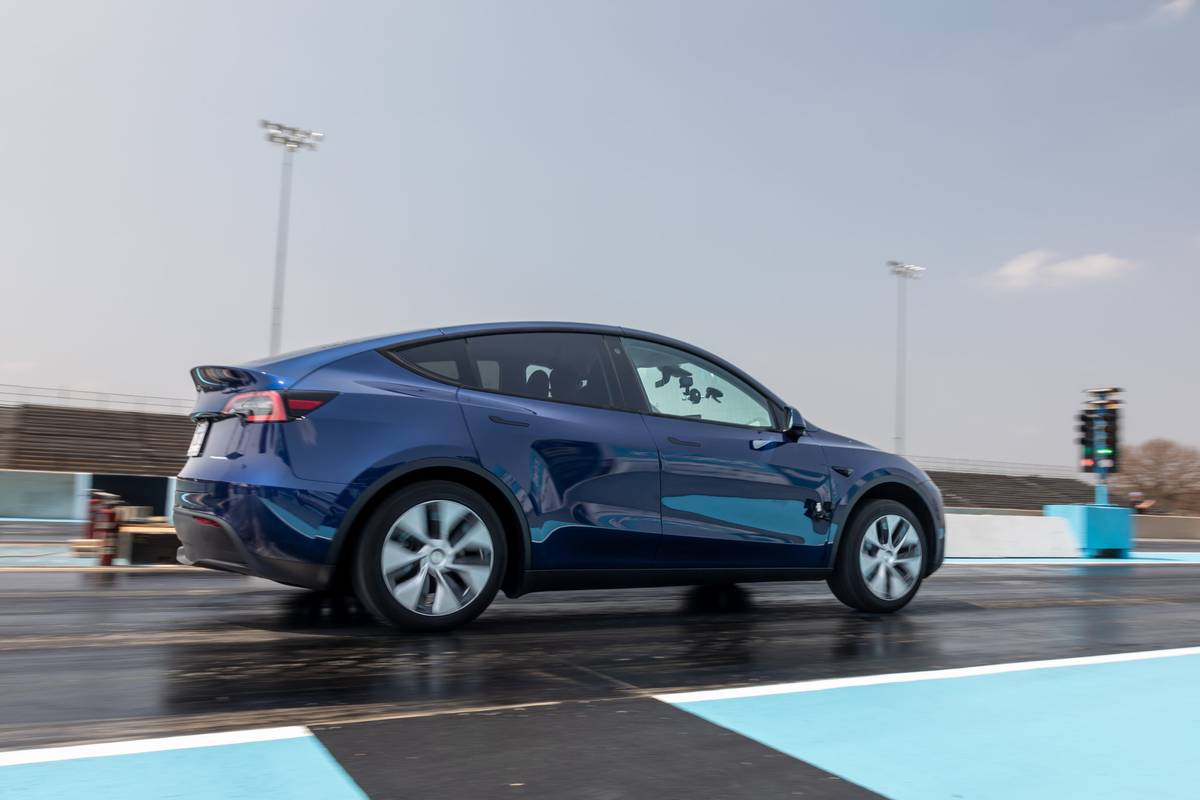





Our Test Vehicle
- As-tested price: $72,440 (including $1,200 destination and $250 ordering fee)
- 0-60 mph: 4.79 seconds
- Quarter-mile acceleration: 12.77 seconds at 114.35 mph
- EPA-rated efficiency (mpg-equivalent): 125
- EPA-rated range (miles): 326
Cars.com ordered this Model Y in July 2021, and it was delivered in November. While we paid $60,290 (all prices include destination) for ours, pricing has risen steadily since then, and ordering the same vehicle today would cost $72,440, as noted above. In our testing, the Model Y excelled in a number of driving-related categories, but it also suffered from ride harshness, DC fast-charging speed, poor visibility and user-interface quirks, all of which hurt it in our scoring.
The Good
Acceleration: In our acceleration testing, the Model Y started slowly, but by 60 mph, it was neck-and-neck with the Ioniq 5, and beyond that it pulled away from the Hyundai, finishing the quarter-mile nearly 0.4 second quicker and, with a speed of 114.35 mph, 10 mph faster. Our experience at the track was borne out on the street, where the Model Y’s high-speed passing power impresses when accelerating on the highway.
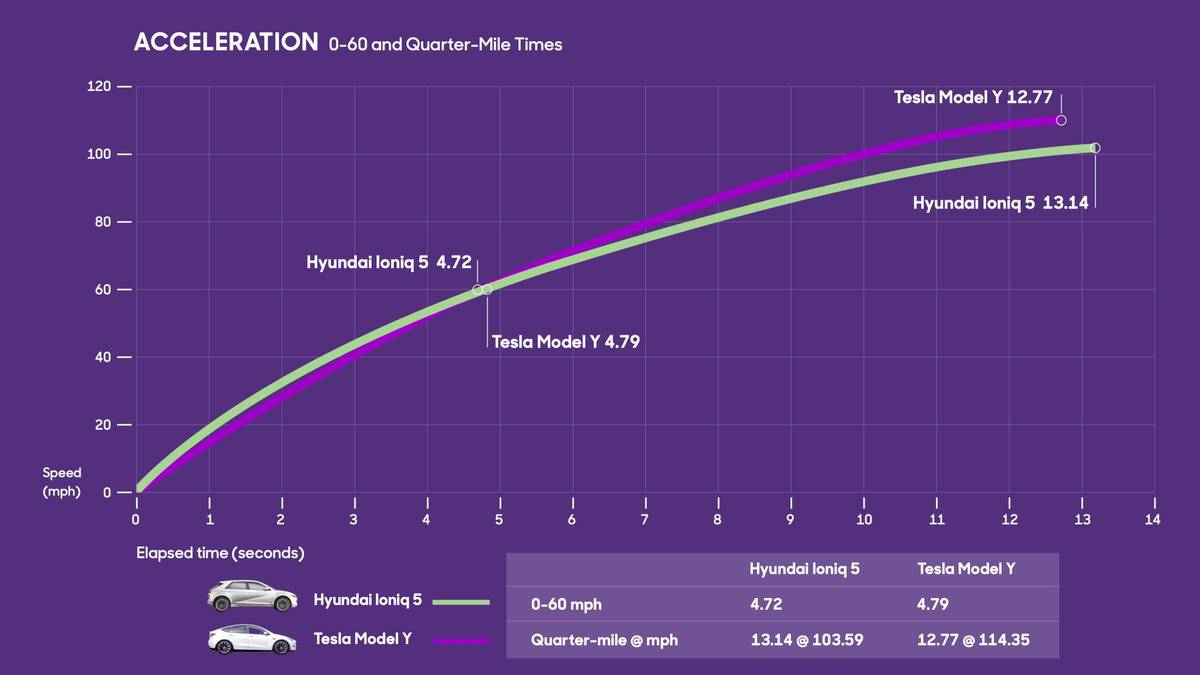
Handling: From its tight, responsive steering to its planted feel, the Model Y’s handling performance is exceptional for an SUV and significantly better than the Ioniq 5’s; of all our subjective tests, the 9-point difference between the Tesla’s and Hyundai’s handling scores was greatest. On our autocross course, the Model Y felt quick and poised — in stark contrast to the Hyundai. Despite its quick steering ratio, the Model Y doesn’t feel twitchy when cruising on the highway. It’s the best of both worlds.
Home charging: The Model Y’s greater efficiency gives it an advantage when charging at home, letting it add more miles of range per hour than a less efficient EV like the Ioniq 5. Using a 48-amp Wallbox Pulsar Plus to charge both EVs for an hour from a similar state of charge resulted in 11.5 kilowatt-hours of energy added to the Model Y and 11.3 kWh for the Hyundai. However, that energy was good for 46 miles of range in the Tesla versus 38 miles of range in the Hyundai.
Cargo space: With its third row folded, the Model Y has more rear cargo space than the Ioniq 5: 20.8 versus 19.1 cubic feet, according to Cars.com cargo measurements. The Tesla also has a considerably larger front trunk for an additional 2.9 cubic feet. The Ioniq 5’s frunk is just 0.4 cubic foot.
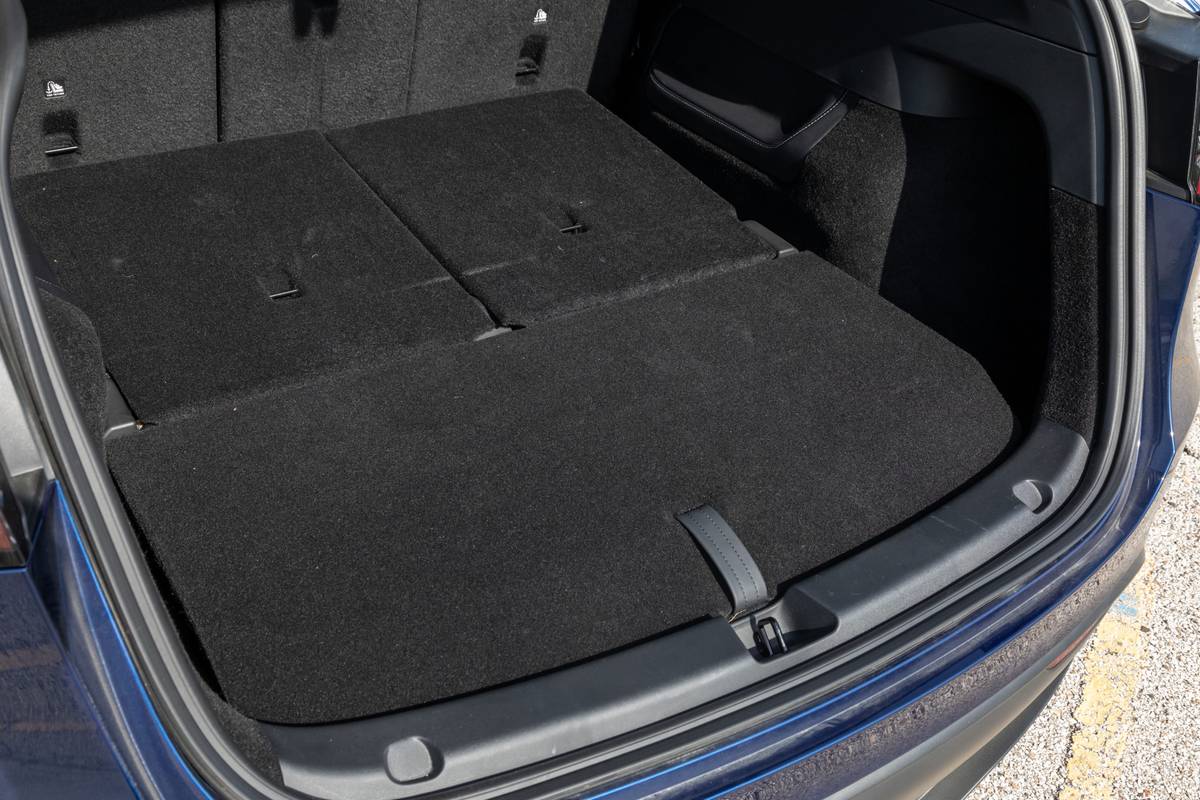
The Bad
Fast-charging speed: While the Model Y’s 250-kilowatt maximum charging rate was higher than the Ioniq 5’s 187-kW observed rate, the Hyundai did a better job maintaining its rate over the course of the charging session compared with the Tesla, which saw its charging rate steadily fall. Both SUVs’ batteries charged from an 18%-80% state of charge, and they added similar miles of range: 164 miles for the Model Y and 152 for the Ioniq 5. The Ioniq 5, however, was done charging in 18 minutes, while the Model Y kept going for another 10 minutes. This meant the Model Y only added 5.9 miles of range per minute, while the Ioniq 5 added 8.4 miles per minute. Charging costs were nearly identical — around $22 each.
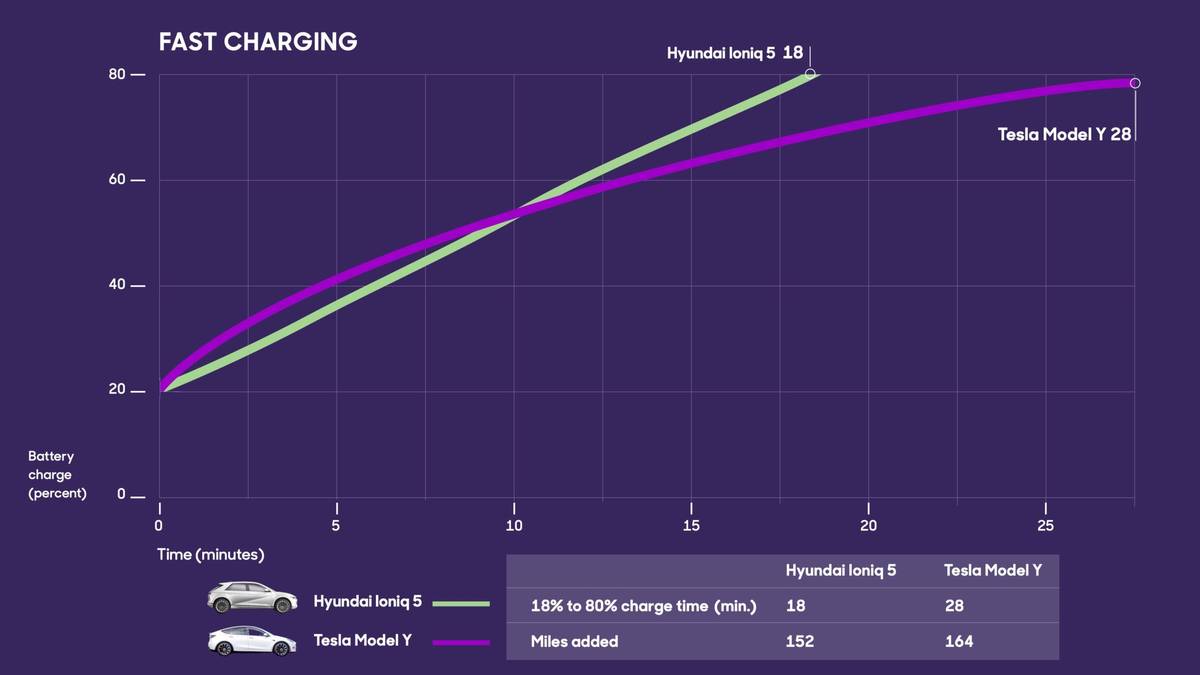
Ride quality: The Model Y’s ride is firm, and you end up feeling a lot of bumps. The tuning might not be an issue if you live in an area of the country that has pristine roads, but if you don’t, it could very well be an issue. Here in Chicago, we don’t, and the stiff tuning is reflected in the scoring: The Tesla earned just half the number of points as the Ioniq 5. The busy ride grates on you after a while and detracts from the otherwise engaging driving experience.
Interior noise: EVs are quieter than gas-powered vehicles, and the Tesla is in most respects, too, but you do hear loud thwack sounds in the cabin whenever you encounter significant road imperfections. For an SUV with a luxury price tag, it’s unacceptable.
Controls interface: The Model Y’s central dashboard touchscreen is the hub for most vehicle controls, and while its interface is good overall, Tesla has unnecessarily consolidated controls on the screen, like those for the windshield wipers; a tried-and-true wiper stalk would be better. The lack of a dedicated instrument cluster in front of the driver will be a problem for some shoppers, too.
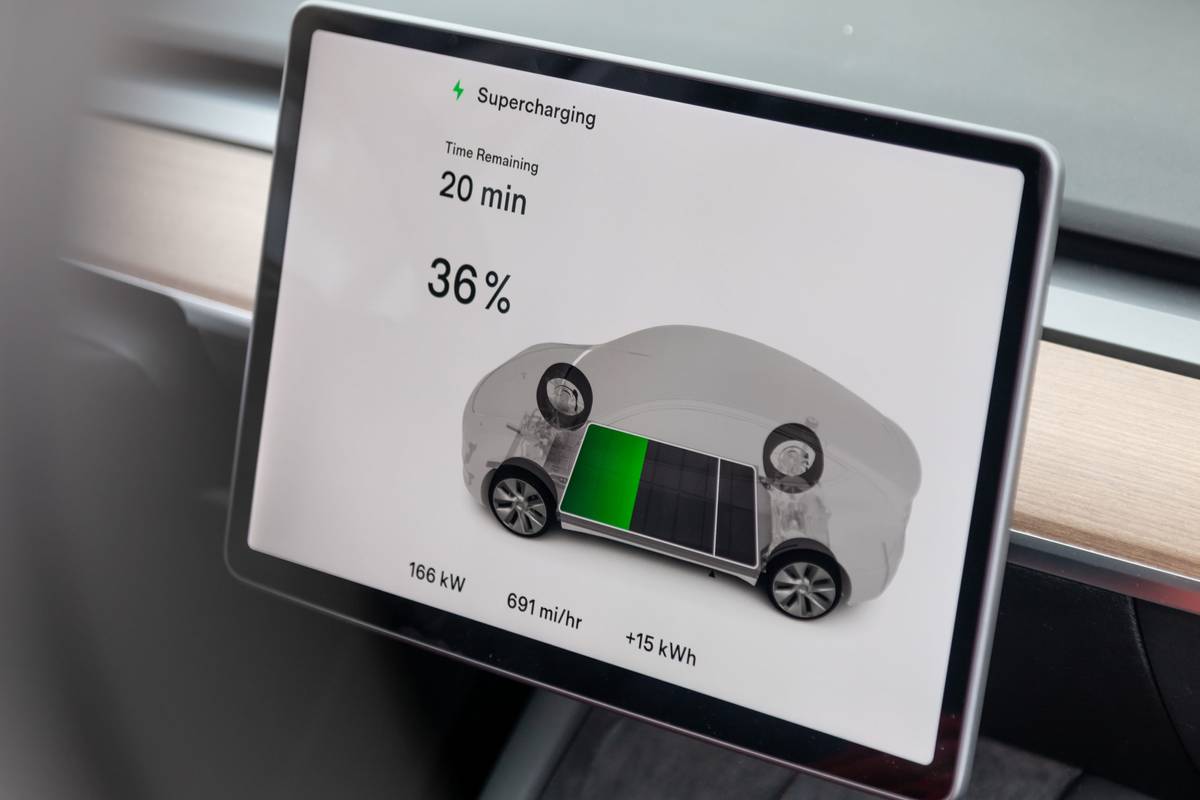
Rear visibility: The Model Y’s rear window is set at such an angle that you can barely see cars when they’re right behind you.
No Apple CarPlay, Android Auto: The Model Y’s multimedia system offers many audio streaming choices, but Apple CarPlay and Android Auto smartphone connectivity — features that have become common in other new cars — aren’t available in the Model Y.
Research the Tesla Model Y | Search Inventory | Car Seat Check
1: 2022 Hyundai Ioniq 5 Limited AWD
The verdict: Driving an EV has often meant putting up with compromises where practicality or ease of use are concerned. The Ioniq 5, however, asks few compromises of its driver and passengers, making it a great choice for consumers who want to make the jump into EV ownership as well as experienced EV drivers looking for their next vehicle.
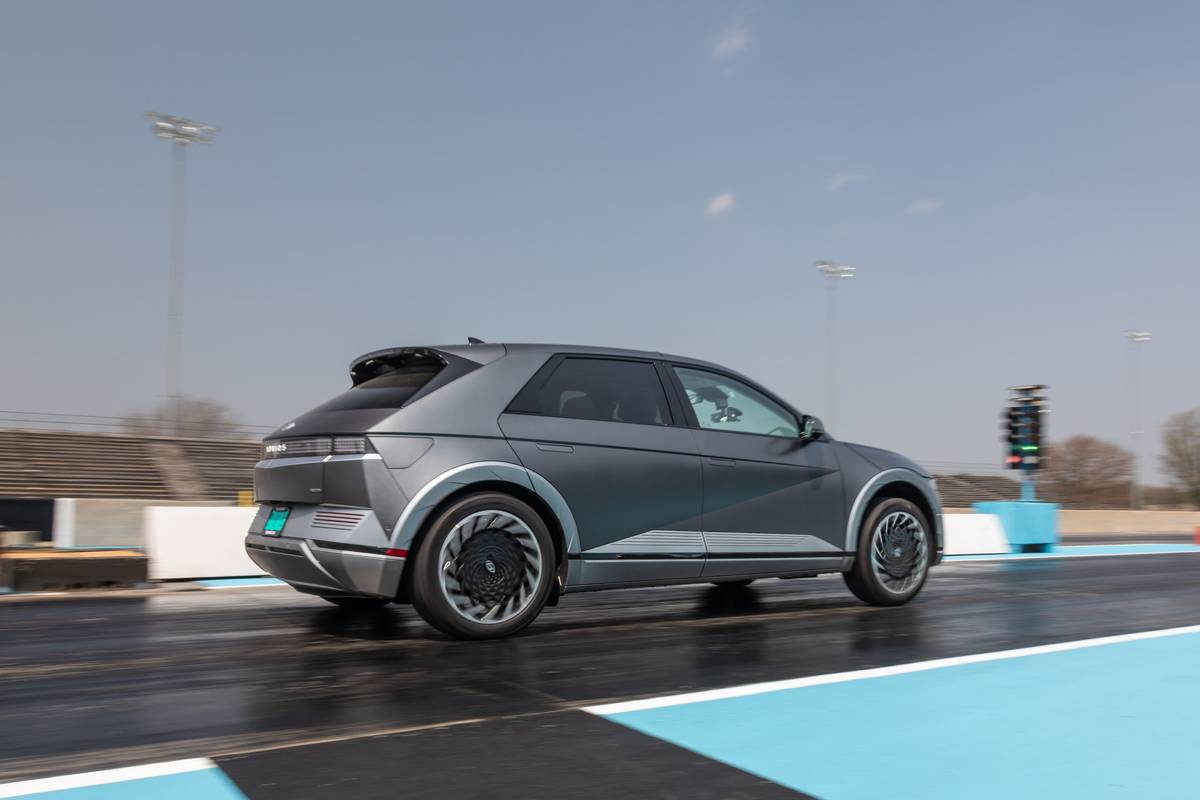
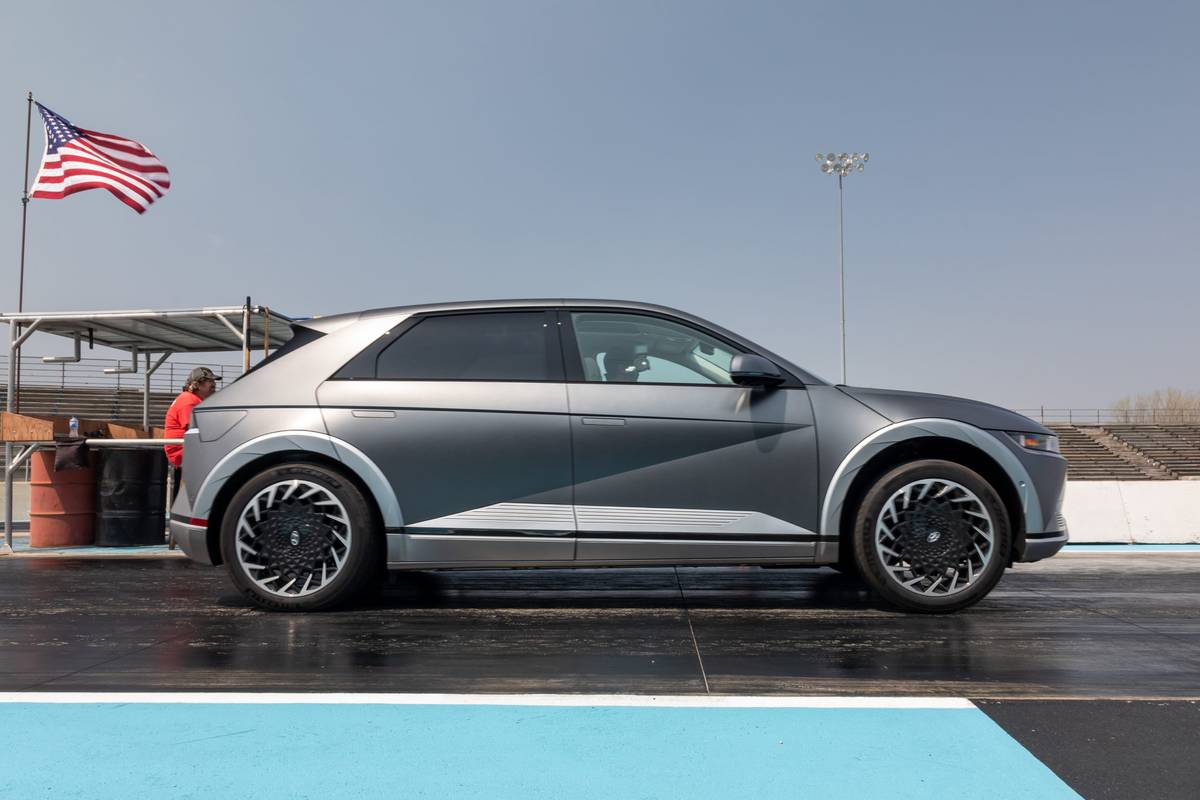
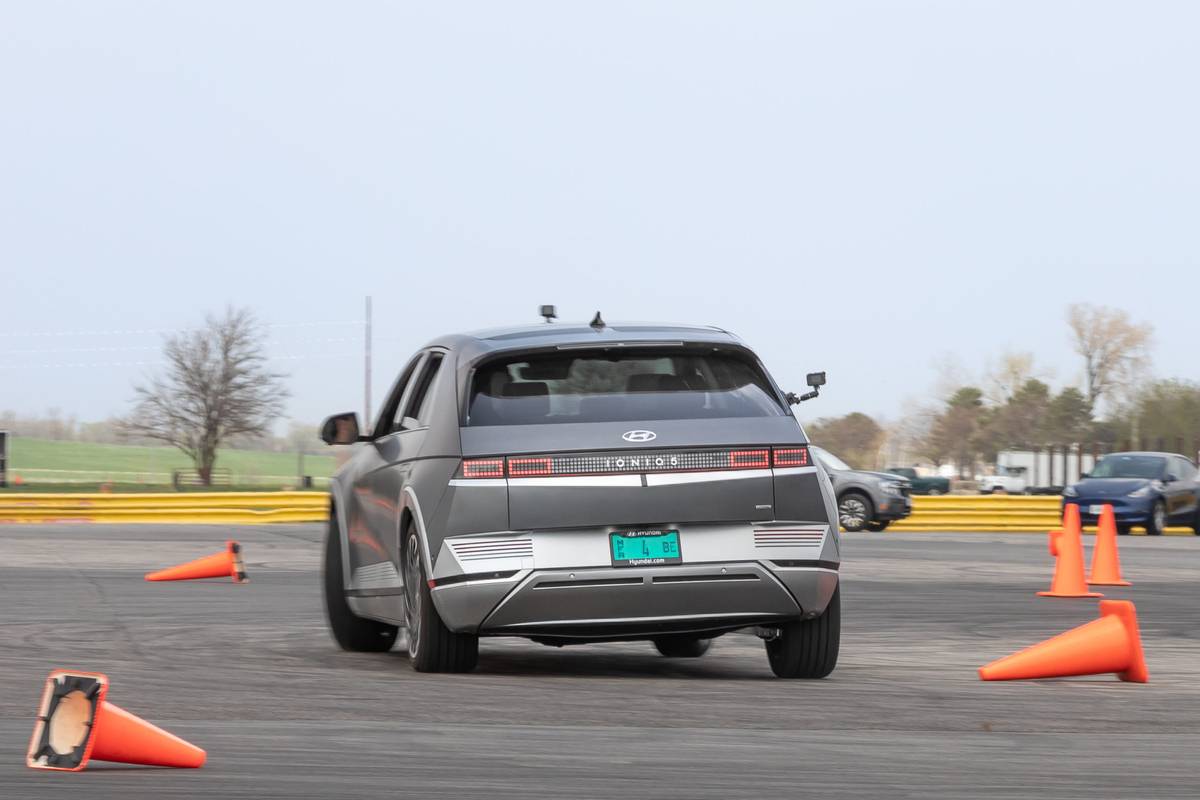
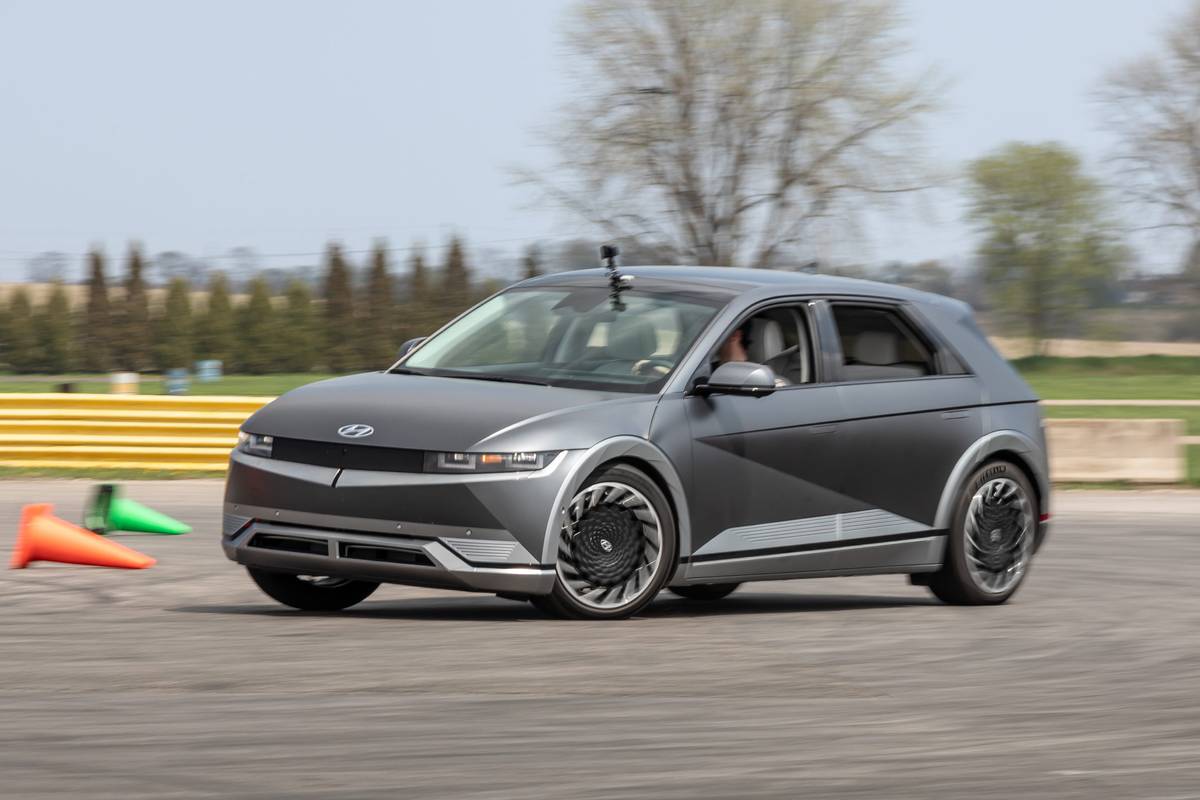




Our Test Vehicle
- As-tested price: $57,490
- 0-60 mph: 4.72 seconds
- Quarter-mile acceleration: 13.14 seconds at 103.59 mph
- EPA-rated efficiency (mpg-e): 98
- EPA-rated range (miles): 256
We tested a top-of-the-line Ioniq 5 Limited with AWD that was loaded with features like heated and ventilated front seats, a panoramic glass roof and dual 12.3-inch dashboard screens, to name a few. Its as-tested price was $57,490, not counting a federal tax credit of up to $7,500 that’s still available (unlike with the Tesla) to eligible buyers as of this writing. Value is part of the Ioniq 5’s appeal, but it’s also comfort-oriented and has impressive DC fast-charging capabilities. Its handling, however, was less impressive.
The Good
Ride comfort: The Ioniq 5 has a firm and controlled ride, but it’s not harsh, making it livable for places where the roads aren’t perfectly smooth. Even with our Limited trim’s 20-inch wheels and low-profile tires, the ride was still decent on the pockmarked roads we drove.
Customizable regenerative braking: It’s easy to tailor the Ioniq 5’s regenerative braking using steering-wheel paddles, letting you coast on one end of the spectrum or have one-pedal driving on the other. For someone new to EVs, the system lets you choose the amount of regen that’s right for you. However, we didn’t like that the one-pedal driving mode wouldn’t stay active; you had to select it each time you started the Ioniq 5.
Interior storage: The Ioniq 5 has a huge, open front storage area instead of a traditional center console like the Tesla, and on Limited trims, the console slides forward and backward. Besides the open storage space, there’s still some covered storage under the front center armrest.

Fast-charging speed: The Ioniq 5 charged from 18%-80% in just 18 minutes on a 350-kW Electrify America DC fast charger, on which it can charge at a rate of up to 240 kW, adding 152 miles of range in that time. By contrast, it took 28 minutes for the Model Y to go from 18%-80% using a 250-kW Supercharger, the fastest type currently available; this added 164 miles of range to the Tesla. Break those numbers down, and the Ioniq 5 added 8.4 miles a minute versus the Tesla’s 5.9 miles a minute.
Value: Our Tesla’s year-ago pricing was much more comparable to the Ioniq 5’s, but a series of price hikes has turned it into a significantly more expensive SUV — and that’s before you take into account the $7,500 federal tax credit that’s available to qualifying Ioniq 5 buyers. With the tax credit factored in, are we getting $20,000 more SUV with the Model Y versus the Ioniq 5? In our view, no. While the Model Y’s better home-charging efficiency is a big plus, other characteristics that looked good on paper — like overall range and fast-charging specs — weren’t decisive advantages in our testing, and in some cases were disadvantages.
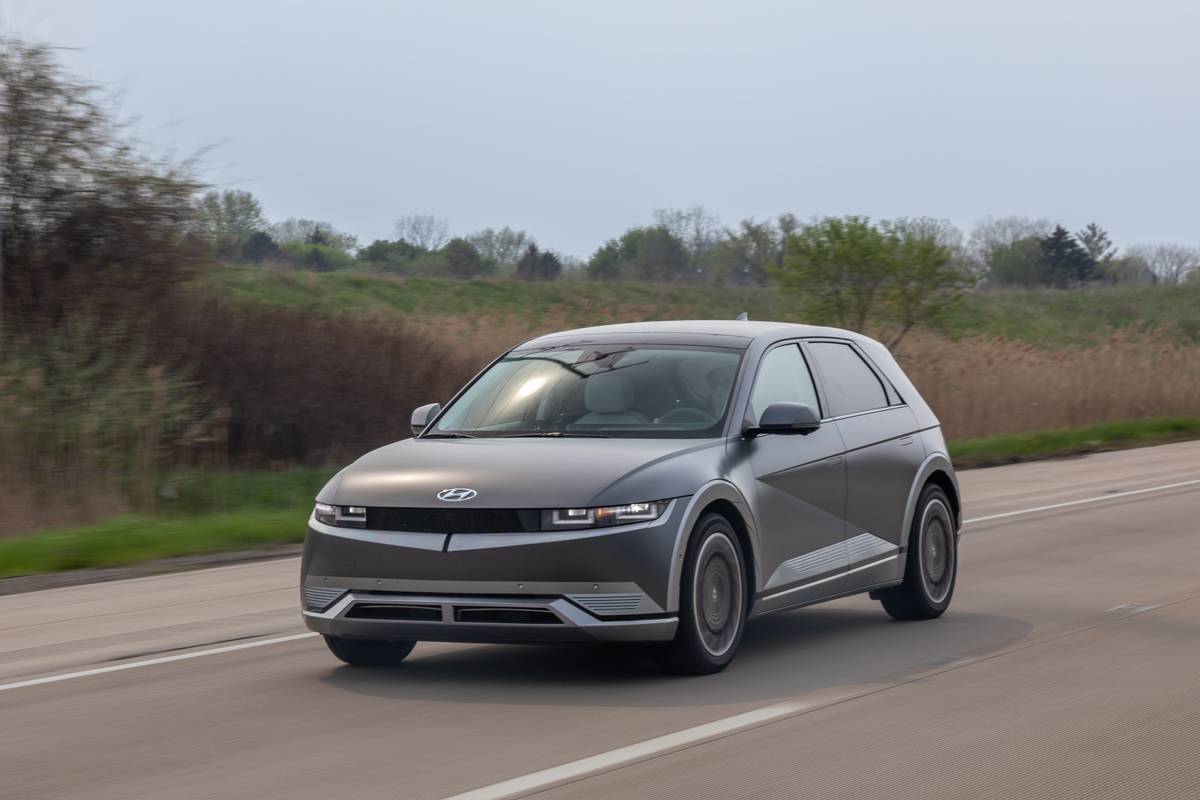
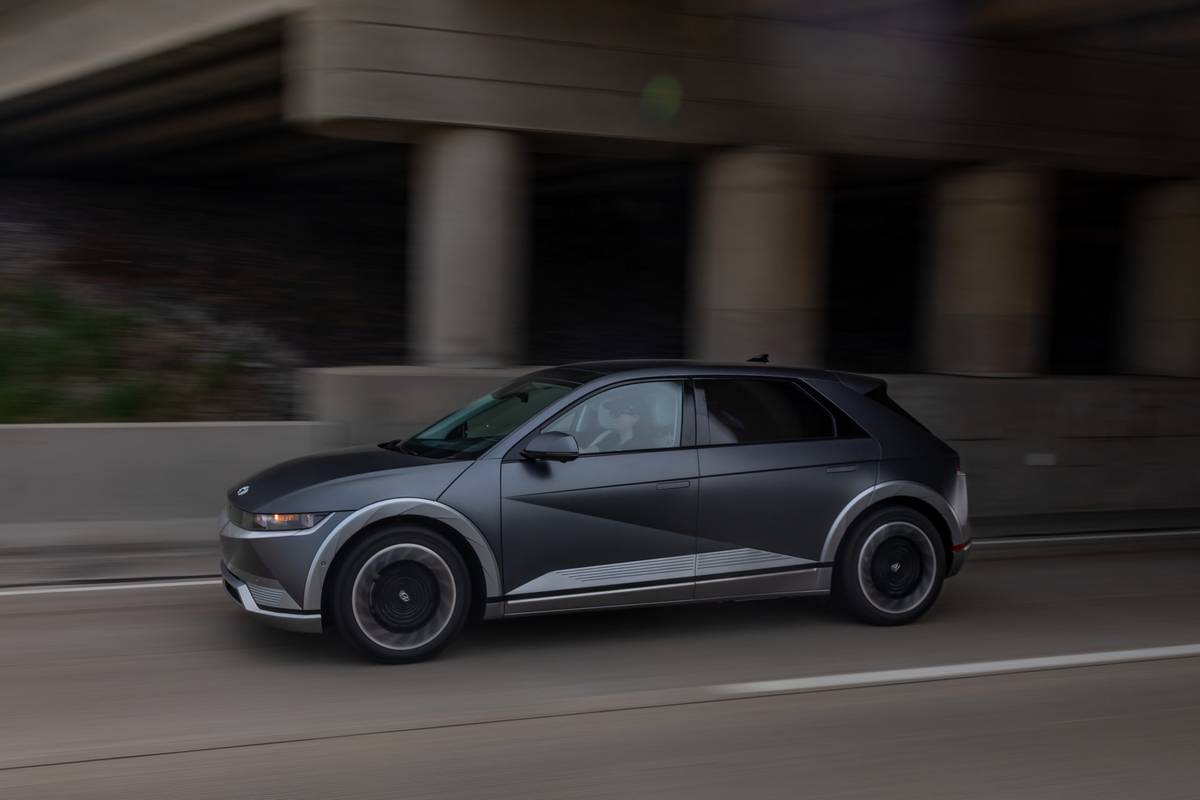
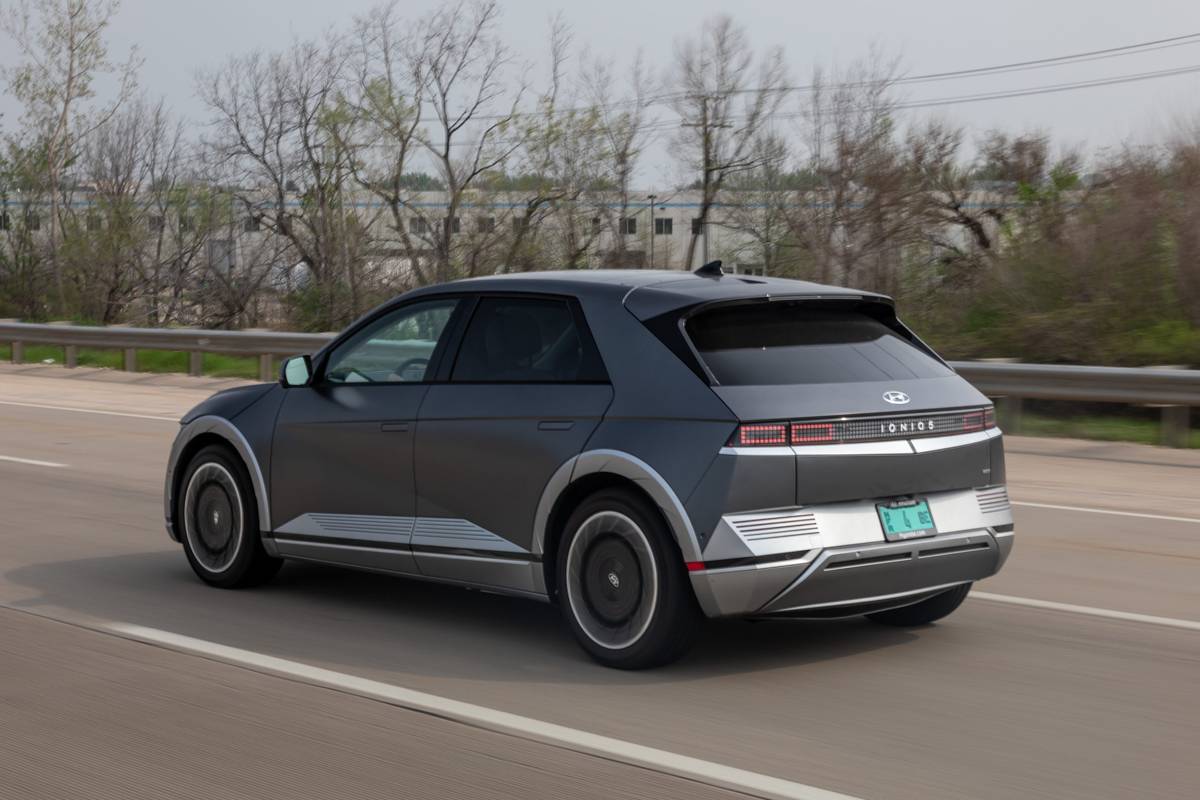
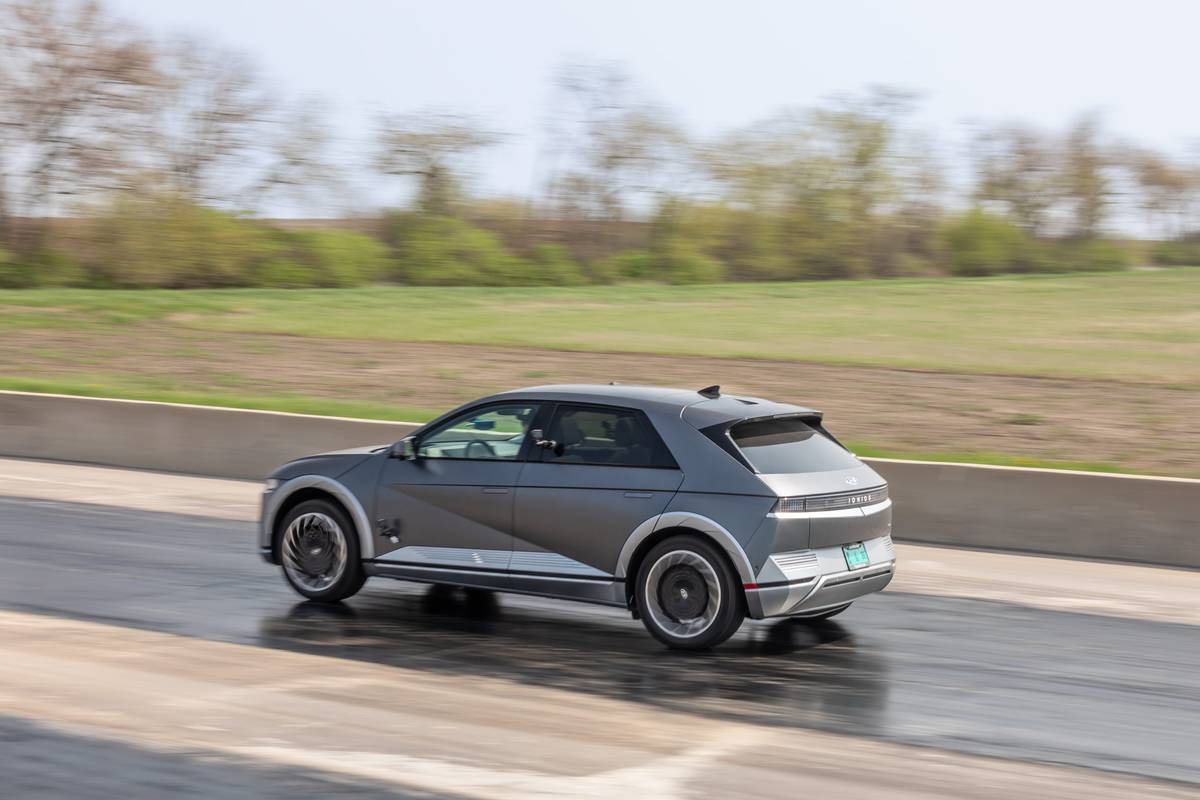




The Bad
Handling: While the Model Y aced our autocross course, the Ioniq 5 was a dud; the Hyundai felt unrefined when really pushed, and it leaned over and overworked the outside tires in corners. It’s not the fun-to-drive option by a longshot.
Distracting head-up display: The Ioniq 5 gets props for offering a head-up display (the Model Y doesn’t), but it’s more distracting than not because you can’t position it low enough on the windshield so that it’s not in your line of sight. More adjustability would be welcome.
Blocked instrument panel: We noticed the Ioniq 5’s steering wheel blocks much of its digital instrument panel, making it hard to see information like the speed readout. Workarounds include moving the driver’s seat and steering wheel higher, but this isn’t ideal.
Research the Hyundai Ioniq 5 | Search Inventory | Car Seat Check
More Takeaways
While the Model Y is the more expensive vehicle, we wouldn’t necessarily call it the more luxurious one. The Tesla’s minimalist aesthetic will appeal to some, but its mostly good materials quality wasn’t any better than what was in the Ioniq 5.
We also like the thinking behind the Ioniq 5’s vehicle-to-load feature, which provides enough energy to power small appliances. It’s the kind of innovation we’d expect from Tesla when you consider the other ways the automaker has upended the car business, but Hyundai has beat it to the punch with this feature.
While the Model Y couldn’t match the Ioniq 5 in our DC fast-charger testing, it did have slightly better observed efficiency than the Hyundai during our 200-plus-mile range test: 3.4 miles per kWh versus 3.1. The Tesla was also a bit better at predicting driving range, with little variance between predicted miles used and actual miles traveled.
In the end, we recognize that different aspects of EVs are important to different shoppers. If you’re interested in a Model Y or Ioniq 5, take a look at the chart above to see how the vehicles performed in the categories that matter most to you.
More From Cars.com:
- 2022 Hyundai Ioniq 5 Review: The EV We’ve Been Waiting For
- 2022 Hyundai Ioniq 5 Named IIHS Top Safety Pick Plus
- Is the 2022 Hyundai Ioniq 5 a Good Electric Car? 5 Pros and 4 Cons
- Here Are the 11 Cheapest Electric Vehicles You Can Buy
- Which Electric Cars Are Still Eligible for the $7,500 Federal Tax Credit?
- Electric Cars With the Longest Range
Cars.com’s Editorial department is your source for automotive news and reviews. In line with Cars.com’s long-standing ethics policy, editors and reviewers don’t accept gifts or free trips from automakers. The Editorial department is independent of Cars.com’s advertising, sales and sponsored content departments.
Featured stories









